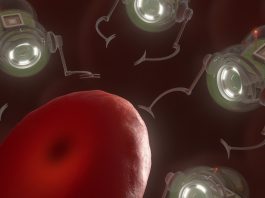Researchers from Japan say they have manufactured the world’s fastest ever exfoliation of a photomechanical material, changing mechanics as we know it.
The team, led by Professor Seiya Kobatake of the Graduate School of Engineering, Osaka City University, experimented with the utilisation of UV light on crystals made of a diarylethene compound – which resulted in the 2-4 micrometre crystals being peeled away at a speed of 260 microseconds, making it the fastest exfoliation of a photomechanical material in history.
The refinement of photomechanical technology could change the landscape of machinery as we know it, offering a green and sustainable alternative to conventional technology used daily around the world.
Masato Tamaoki, a graduate student at Osaka City University, said: “The problem has been manipulating a material with light at the speed and size appropriate for photomechanical devices.”
Within the anatomy of all machinery lies an intricate network of moving parts (actuators), all possessing their function, and all of which require a means of power. Car brake systems use compressed air (pneumatic), excavators use compressed liquid (hydraulic), and many household appliances employ electricity, but what if they could be powered by light?
Photoactuators would remove the necessity for a direct power source, and within the framework of the machine, can be made applicable in places where electrical wiring and circuitry cannot.
Professor Kobatake said: “My lab has been exploring the photomechanical properties of diarylethene for many years now. They found that under UV light, the molecules of the compound demonstrated behaviours such as expansion/contraction, bending, twisting, and peeling.
“There were only two examples of the peeling behaviour, making it a very rare motion. We focused on this issue by experimenting with crystal size and photoirradiation conditions.”
The team discovered that the diarylethene would transform into a blue colour and crack when exposed to the strain of UV light. Contrastingly, if the UV light were focused on the vicinity of the crystal, the peeling of the exposed section was demonstrated at an astonishing speed of 260 microseconds, smashing previous records of tens of seconds and minutes.
“We are very pleased to have discovered the world’s fastest, photoreversible exfoliation behaviour, which is expected to become a new manufacturing method for photoactuator materials,” added Tamaoki.
Their research is published in Crystal Growth & Design of the American Chemical Society.









